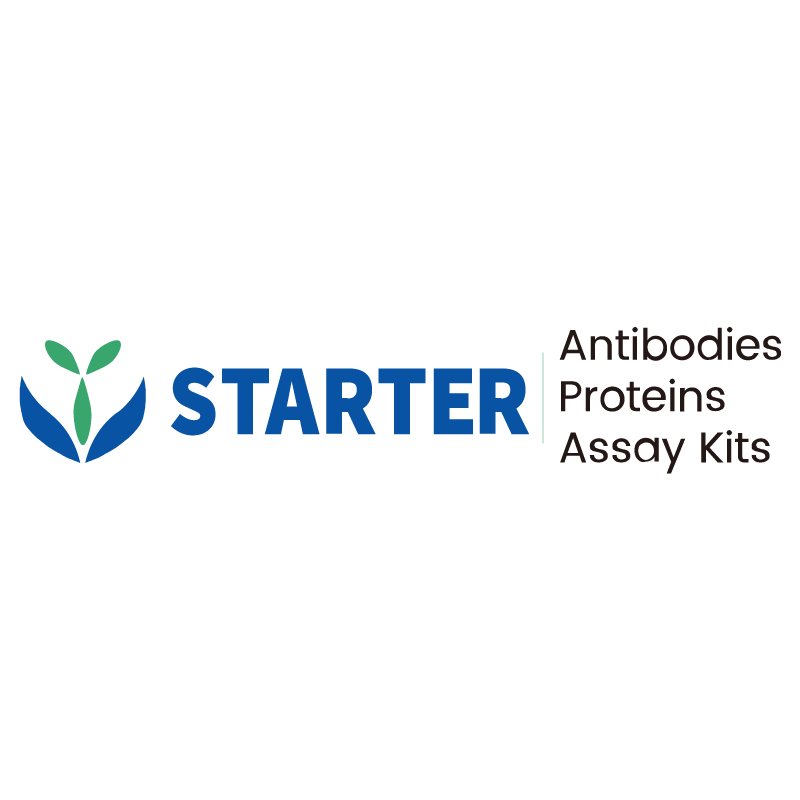WB result of MYG1 Recombinant Rabbit mAb
Primary antibody: MYG1 Recombinant Rabbit mAb at 1/1000 dilution
Lane 1: HT-29 whole cell lysate 20 µg
Lane 2: SW480 whole cell lysate 20 µg
Lane 3: LoVo whole cell lysate 20 µg
Lane 4: SW620 whole cell lysate 20 µg
Lane 5: HCT 116 whole cell lysate 20 µg
Low expression control: HT-29 whole cell lysate
Secondary antibody: Goat Anti-rabbit IgG, (H+L), HRP conjugated at 1/10000 dilution
Predicted MW: 43 kDa
Observed MW: 38 kDa
This blot was developed with high sensitivity substrate
Product Details
Product Details
Product Specification
| Host | Rabbit |
| Antigen | MYG1 |
| Synonyms | MYG1 exonuclease; C12orf10 |
| Immunogen | Synthetic Peptide |
| Location | Nucleus, Mitochondrion |
| Accession | Q9HB07 |
| Clone Number | S-2248-25 |
| Antibody Type | Recombinant mAb |
| Isotype | IgG |
| Application | WB, IHC-P, ICC |
| Reactivity | Hu, Ms, Rt |
| Positive Sample | SW480, LoVo, SW620, HCT 116 |
| Purification | Protein A |
| Concentration | 0.5 mg/ml |
| Conjugation | Unconjugated |
| Physical Appearance | Liquid |
| Storage Buffer | PBS, 40% Glycerol, 0.05% BSA, 0.03% Proclin 300 |
| Stability & Storage | 12 months from date of receipt / reconstitution, -20 °C as supplied |
Dilution
| application | dilution | species |
| WB | 1:1000 | Hu |
| IHC-P | 1:200 | Hu, Ms, Rt |
| ICC | 1:500 | Hu |
Background
MYG1 protein, also known as Melanocyte Proliferating Gene 1, is a dual-localized 3′-5′ RNA exonuclease found in both the nucleus and mitochondria. It plays a crucial role in RNA processing, specifically in the maturation of ribosomal and messenger RNA in mitochondria, which is essential for mitochondrial function and cellular respiration. MYG1 is involved in coordinating nuclear and mitochondrial translation programs, acting as a key mediator of nucleo-mitochondrial communication. In addition to its role in normal cellular function, MYG1 has been implicated in various pathological conditions. For instance, it is upregulated in colorectal cancer, where it promotes glycolysis and tumor progression through mechanisms involving the AMPK/mTOR signaling pathway. MYG1 is also associated with vitiligo, a skin disorder, and may be involved in antiviral responses.
Picture
Picture
Western Blot
Immunohistochemistry
IHC shows positive staining in paraffin-embedded human testis. Anti-MYG1 antibody was used at 1/200 dilution, followed by a HRP Polymer for Mouse & Rabbit IgG (ready to use). Counterstained with hematoxylin. Heat mediated antigen retrieval with Tris/EDTA buffer pH9.0 was performed before commencing with IHC staining protocol.
IHC shows positive staining in paraffin-embedded human ovarian cancer. Anti-MYG1 antibody was used at 1/200 dilution, followed by a HRP Polymer for Mouse & Rabbit IgG (ready to use). Counterstained with hematoxylin. Heat mediated antigen retrieval with Tris/EDTA buffer pH9.0 was performed before commencing with IHC staining protocol.
IHC shows positive staining in paraffin-embedded human colon cancer. Anti-MYG1 antibody was used at 1/200 dilution, followed by a HRP Polymer for Mouse & Rabbit IgG (ready to use). Counterstained with hematoxylin. Heat mediated antigen retrieval with Tris/EDTA buffer pH9.0 was performed before commencing with IHC staining protocol.
IHC shows positive staining in paraffin-embedded human breast cancer. Anti-MYG1 antibody was used at 1/200 dilution, followed by a HRP Polymer for Mouse & Rabbit IgG (ready to use). Counterstained with hematoxylin. Heat mediated antigen retrieval with Tris/EDTA buffer pH9.0 was performed before commencing with IHC staining protocol.
Immunocytochemistry
ICC shows positive staining in SW480 cells. Anti-MYG1 antibody was used at 1/500 dilution (Green) and incubated overnight at 4°C. Goat polyclonal Antibody to Rabbit IgG - H&L (Alexa Fluor® 488) was used as secondary antibody at 1/1000 dilution. The cells were fixed with 100% ice-cold methanol and permeabilized with 0.1% PBS-Triton X-100. Nuclei were counterstained with DAPI (Blue). Counterstain with tubulin (Red).


